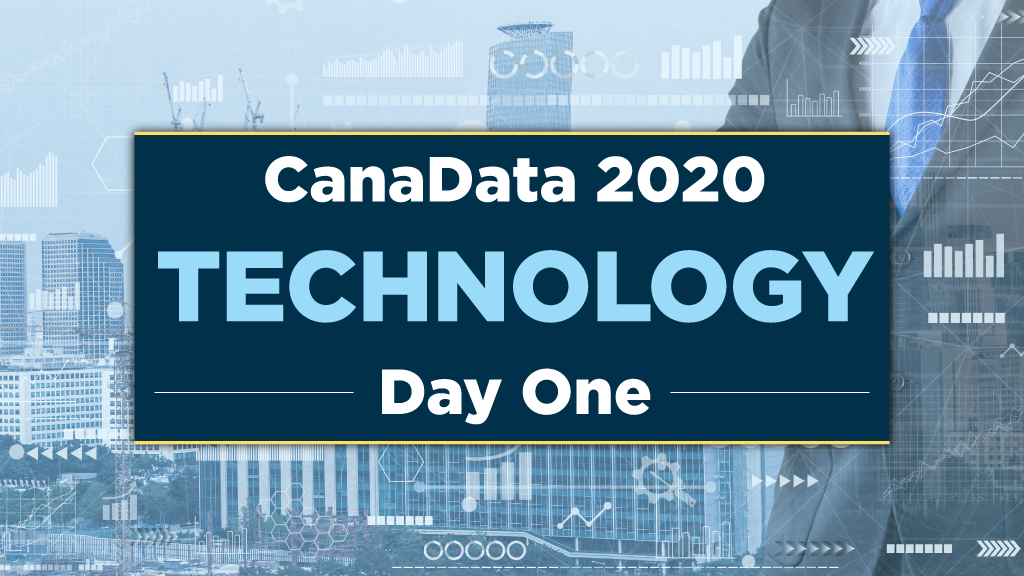Day One of CanaData 2020 focused on technology and the construction industry and featured James Benham of Texas-based JBKnowledge hosting Procore Canada vice–president Jas Saraw and Microsoft Canada national technology officer John Weigelt. Each speaker addressed a different aspect of how technology is transforming the industry in the midst of and because of a historic health crisis.
Saraw’s talk, The Rise of Data and the Future of Construction, looked at analytical tools and data’s role in construction. Below are some key points from his session.
- Construction ranks above agriculture and hunting in its adoption of digitization but “to be fair that’s changed a lot in the last few years.”
- Rework is affecting both time and efficiency and construction is increasingly complex making planning difficult.
- How can we tie up inefficiencies in forecasting and scheduling while delivering reliably? The answer ultimately is in non-siloed data.
- Long before the pandemic, construction was in the midst of a digital revolution driven by data
- 96 per cent of data goes unused in the engineering and construction industries.
- How to approach the data: use data retrieval to save time, process automation to improve productivity, and employ insights which will lead to better decisions.
- Use data, artificial intelligence and machine learning to up–level the construction process.
Weigelt addressed digital transformation and said Canadian firms have been reluctant to change because up until now they haven’t faced the pressures of American firms. Unlike the United States, Canada didn’t face a banking crisis but the current COVID-19 pandemic has pushed innovation forward out of necessity.
- Smart cities tools were being built organically in Canada rather than big showcase projects.
- There are three parts to response to the pandemic: react, respond and recover.
- Data is important to visualize and also cloud computing helps to adapt.
- Canada has the lowest confidence in AI in the G8 nations.
- Augmented reality is important to bring an overlay on the physical world. It helps us make the most use of these resources.
- Quantum computing could fundamentally change computing resources and could solve currently intractable problems.
- Technologies get bogged down in macro level discussions that don’t always apply.
- When looking at the Internet of Things (IoT), take look at changes that have happened in response to the pandemic crisis.
- Digital Twins also fuse together physical and digital: Microsoft worked with PCL Construction and they started with big paper binders to build a Toronto project. They looked at wiring the jobsite with sensors to get a sense of job progress from beginning to completion.
- This methodology helped with reskilling and analysis and is now being used on 27 sites
Benham spoke to driving innovation from within organizations with his session called, Driving Innovation at Complacent Companies. Benham’s points included:
- We have the world’s oldest industry with a rapidly changing present and an abundant future.
- How do we build more “mad scientist” innovators? Who can transform your company from the inside out? These people are often hidden jewels inside your organization.
- We have to tackle the big stuff that impacts humanity, not how to get people to click the next ad.
- How to build mad scientists in your org: set an audacious goal, have dedicated staff, space and budgets, have process and purpose, spend time studying the problem and focus on adoption
- LEAN methods have helped his own organization and others to not operate on SOYP, a.k.a. Seat Of Your Pants management
Today’s event included Q&A session, including these questions:
Is Canada investing in 5G technology?
Weigelt: There’s heavy investment in 5G but confusion as to where it’s happening. It’s primarily taking place in urban centres but other solutions are being pursued for rural areas such as satellite internet.
What effect has COVID-19 health measures had on the industry?
Saraw: The big push in the initial months of COVID-19 was safety, and that’s taken hold. That won’t be a flash in the pan. It’ll be here for the long term.
Benham: there’s thermal imaging and other technology in place that will be used for things like the flu and other non-pandemic problems.
How far can new technology address the skilled labour shortage?
Benham: It can be used as both a recruiting and training tool.
Weigelt: It’s a re-ordering of the jobsite and we have to change how we treat individuals not only with regard to health but on dangerous sites.
What are the uses of 360-degree cameras?
Benham: It’s one of the highest value and lowest cost tools you can use. It takes one photo that replaces 500 individual photos.
Saraw: Add artificial intelligence and machine learning and you can leverage the capacity of 360-degree cameras to do object searches, BIM comparisons and safety scans.
Staff writer Angela Gismondi will have comprehensive coverage of the presentations given during Day One of CanaData in an upcoming article. Tomorrow, a new group of speakers, including economist Peter Norman, Ray Wong of Altus Group, Abacus Data CEO David Coletto and Rennie Consulting vice–president Andrew Ramlo tackle the topic of demographics and Canadian construction.











Recent Comments
comments for this post are closed